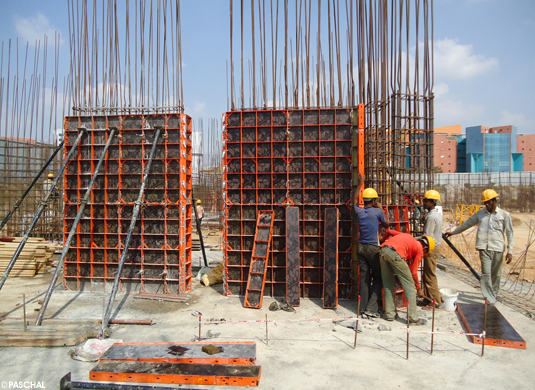In the expansive world of IT hardware and networking, network accessories play a crucial role in ensuring the smooth and efficient operation of computer hardware systems. These accessories, while often overlooked, are vital components that enhance connectivity, improve performance, and provide stability to networking infrastructures. This article delves into the importance of network accessories, explores various types, and highlights their significance in the realm of computer hardware and networking.
The Role of Network Accessories
Network accessories are the supplementary components that support and enhance the functionality of primary networking equipment such as routers, switches, and servers. These accessories include cables, connectors, adapters, patch panels, racks, and surge protectors, among others. Each accessory serves a specific purpose, contributing to the overall performance and reliability of the network.
Cables and connectors are fundamental network accessories that establish physical connections between different hardware components. Ethernet cables, for instance, connect computers, printers, and other devices to the network, enabling data transfer and communication. High-quality cables and connectors ensure stable and high-speed data transmission, minimizing the risk of signal loss and interference.
Importance of Cables and Connectors
Ethernet cables are available in various categories, with Cat5e, Cat6, and Cat6a being the most common. Each category offers different levels of performance, with Cat6a providing the highest data transfer speeds and bandwidth capabilities. Choosing the right type of cable is essential for optimizing network performance and meeting the specific needs of the network infrastructure.
Connectors, such as RJ45 connectors, are used to terminate Ethernet cables and establish connections between devices. Properly crimped connectors ensure a secure and reliable connection, preventing data loss and connectivity issues. Investing in high-quality cables and connectors is a fundamental step in building a robust and efficient network.
The Function of Adapters and Converters
Adapters and converters are essential Network Accessories that facilitate compatibility between different types of hardware and network standards. For instance, a USB to Ethernet adapter allows a computer without an Ethernet port to connect to a wired network. Similarly, fiber optic converters enable the integration of fiber optic cables with traditional Ethernet networks, extending the reach and capacity of the network.
These accessories are particularly valuable in environments where multiple types of devices and connections coexist. Adapters and converters bridge the gap between different technologies, ensuring seamless communication and data transfer across the network. They provide flexibility and adaptability, allowing networks to evolve and incorporate new technologies without significant overhauls.
Enhancing Network Organization with Patch Panels
Patch panels are critical network accessories used for cable management and organization. They provide a centralized point for connecting and routing cables, making it easier to manage and troubleshoot network connections. Patch panels are typically installed in server rooms or data centers, where they serve as the hub for connecting various devices and network segments.
Using patch panels simplifies the process of adding, removing, or reconfiguring network connections. They also reduce cable clutter, improve airflow, and enhance the overall aesthetics of the network setup. By organizing cables neatly and systematically, patch panels contribute to a more efficient and maintainable network infrastructure.
The Importance of Racks and Cabinets
Racks and cabinets are indispensable accessories for housing and organizing network equipment. They provide a secure and organized environment for servers, switches, routers, and other hardware components. Racks and cabinets are available in various sizes and configurations, catering to different needs and space constraints.
Properly designed racks and cabinets improve airflow and cooling, preventing overheating and ensuring optimal performance of network equipment. They also provide physical security, protecting valuable hardware from unauthorized access and physical damage. Investing in high-quality racks and cabinets is essential for maintaining the integrity and reliability of the network infrastructure.
Surge Protectors and UPS Systems
Power protection is a critical aspect of network reliability, and surge protectors and uninterruptible power supply (UPS) systems are essential accessories for safeguarding network equipment. Surge protectors shield hardware from power surges and spikes, which can cause significant damage and data loss. They provide a layer of defense against electrical anomalies, ensuring the longevity and stability of network components.
UPS systems, on the other hand, provide backup power during outages, allowing network equipment to continue operating and preventing data loss. They offer critical support for maintaining network availability and minimizing downtime during power interruptions. Implementing surge protectors and UPS systems is a proactive measure to protect network infrastructure from power-related issues.
Cable Management Solutions
Efficient cable management is vital for maintaining an organized and functional network. Cable management accessories, such as cable trays, ties, and organizers, help keep cables neat and orderly. These accessories prevent tangling, reduce the risk of damage, and simplify maintenance and troubleshooting.
Proper cable management also enhances the aesthetics of the network setup and improves airflow, contributing to the overall performance and longevity of network equipment. Investing in cable management solutions is a practical step towards creating a more efficient and manageable network environment.
Best Practices for Selecting Network Accessories
Choosing the right network accessories is crucial for building a reliable and efficient network infrastructure. Here are some best practices for selecting network accessories:
-
Quality Over Cost: Invest in high-quality accessories that meet industry standards and specifications. While cost is a consideration, compromising on quality can lead to performance issues and increased maintenance costs in the long run.
-
Compatibility: Ensure that accessories are compatible with existing hardware and network standards. Compatibility issues can cause connectivity problems and hinder network performance.
-
Scalability: Select accessories that can accommodate future growth and expansion. Scalable solutions allow for easy upgrades and additions, ensuring that the network can evolve with changing needs.
-
Vendor Reputation: Choose accessories from reputable vendors known for their reliability and support. Established vendors provide better product warranties and customer service, ensuring peace of mind and long-term satisfaction.
Conclusion
Network accessories are the unsung heroes of IT hardware and networking, playing a vital role in ensuring the smooth and efficient operation of computer hardware systems. From cables and connectors to adapters, patch panels, racks, and power protection solutions, these accessories enhance connectivity, improve performance, and provide stability to networking infrastructures.
Understanding the importance and functionality of various network accessories allows individuals and organizations to make informed decisions when building or upgrading their network infrastructure. By investing in high-quality accessories and following best practices, they can create a robust, reliable, and efficient network that meets their current needs and accommodates future growth. In the fast-paced world of technology, staying abreast of advancements and innovations in network accessories is key to maintaining a competitive edge and ensuring seamless connectivity in an increasingly connected world.












